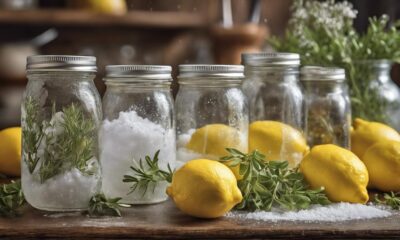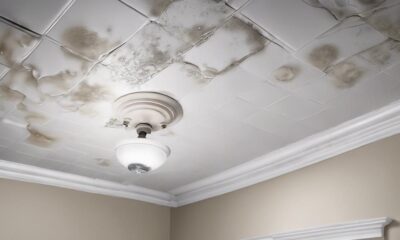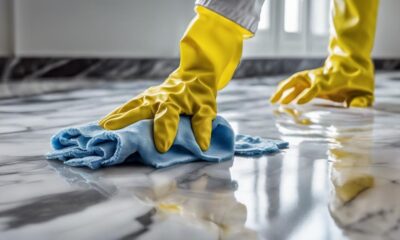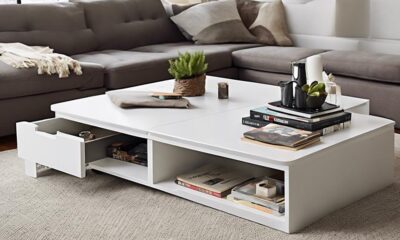Beginners Guides
What Paint to Use on Denim
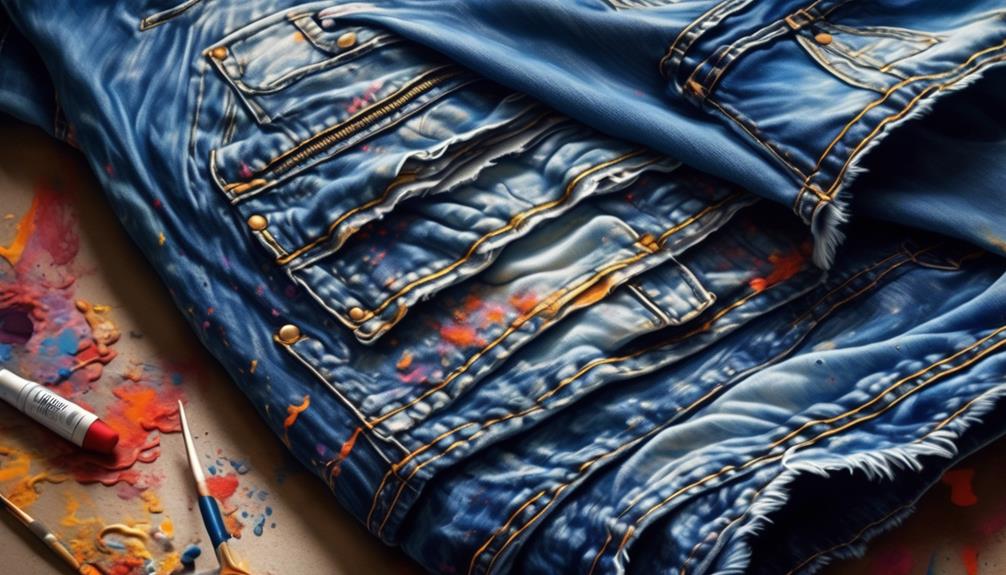
You have made the decision to transform your ordinary denim jacket into a masterpiece—why not?
But now comes the daunting task of choosing the right paint to bring your vision to life.
We've all been there, standing in the art supply store, staring at rows of colorful tubes and wondering which one will actually stick to denim without looking like a hot mess.
Well, fear not, because we're here to help you navigate the world of denim painting.
Whether you're a seasoned artist or a total beginner, we've got the lowdown on the best paints to use on denim and how to make your masterpiece last.
Key Takeaways
- Acrylic paint can be used on denim by using a fabric medium to maintain softness and flexibility.
- Fabric paint is another option for denim, and it can be mixed with fabric medium for added softness and flexibility.
- Spray paint can be used on denim, and it is important to apply light, even coats to prevent drips.
- Fabric markers and puff paint are both options for adding intricate designs and texture to denim.
Acrylic Paint
When painting denim with acrylic paint, we blend modern color trends with classic techniques to create vibrant, long-lasting designs. Acrylic paint provides versatility and durability, making it an ideal choice for denim painting.
One of the key acrylic paint techniques for denim involves preparing the fabric by washing and drying it to remove any residue that may affect the paint's adhesion. Additionally, using a fabric medium with the acrylic paint helps to maintain the softness and flexibility of the denim after painting.
To achieve the best results, it's essential to work in thin layers, allowing each layer to dry completely before adding the next. This technique not only ensures a smooth and even application but also prevents the paint from cracking or peeling over time.
When it comes to denim painting tips, blending and layering colors can add depth and dimension to the design, creating a more dynamic and visually appealing artwork.
Moreover, consider using specialized brushes and fine-tipped applicators for intricate details and precision. These tools enable greater control and accuracy, especially when working on intricate designs or small areas.
Mastering these acrylic paint techniques and denim painting tips will elevate your denim painting endeavors, allowing you to unleash your creativity and craft stunning, personalized pieces.
Fabric Paint
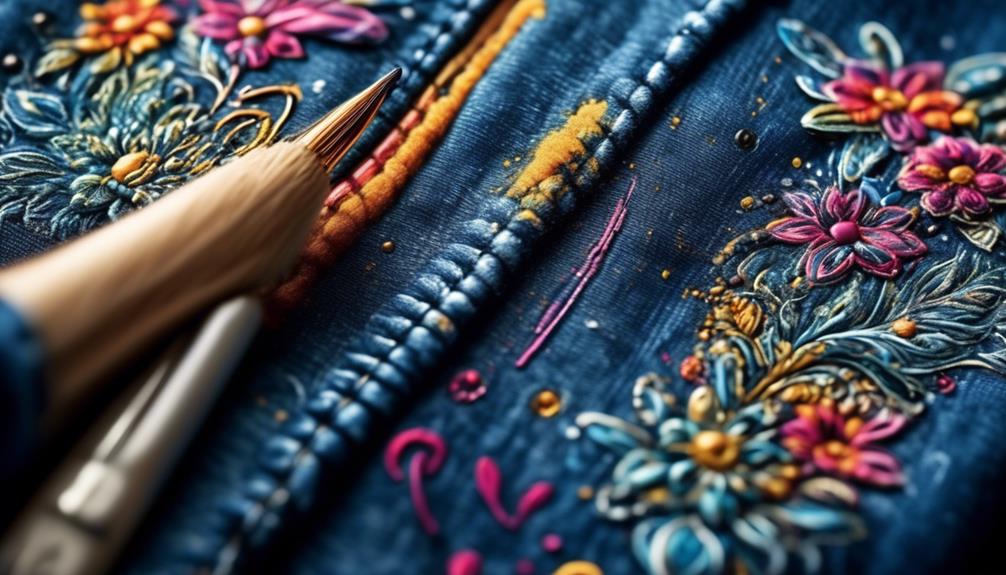
Exploring a spectrum of vibrant hues and innovative techniques, fabric paint offers boundless potential for elevating denim designs to new heights of creativity and style.
When using fabric paint on denim, it's essential to consider the fabric's unique texture and durability. To ensure a successful outcome, pre-wash the denim to remove any sizing and achieve better paint absorption. Experiment with different fabric paint techniques, such as sponge painting, stenciling, or freehand designs, to create captivating and personalized denim pieces.
For a distressed look, consider using sandpaper to roughen up the painted areas after they've dried. Additionally, mix fabric paint with fabric medium to maintain the softness and flexibility of the denim after painting. When selecting fabric paint, opt for high-quality, durable options that are specifically formulated for fabric application, ensuring long-lasting color vibrancy.
Remember to heat set the paint according to the manufacturer's instructions to improve its wash-fastness. By embracing these denim painting tips and unleashing your creativity with fabric paint, you can transform ordinary denim garments into extraordinary works of art.
Spray Paint
Spray painting denim allows for a dynamic and edgy customization of your garments, adding a modern twist to traditional fabric painting techniques. When upcycling denim, spray paint can provide a durable and versatile option for expressing your personal style.
To achieve a professional finish, start by preparing your denim by washing and drying it to remove any residue that could affect the paint's adhesion. Lay the denim flat on a protected surface, and use painter's tape or stencils to create clean lines and intricate designs.
Ensure good ventilation and shake the spray paint can thoroughly before applying light, even coats to prevent drips and ensure proper adhesion. Experiment with different techniques such as stenciling, splattering, or layering colors to achieve unique and eye-catching effects.
Once dry, heat set the paint using a hot iron or a dryer to enhance its durability. With the right techniques and attention to detail, spray painting denim can elevate your wardrobe with a personalized touch that reflects your individuality.
Fabric Markers
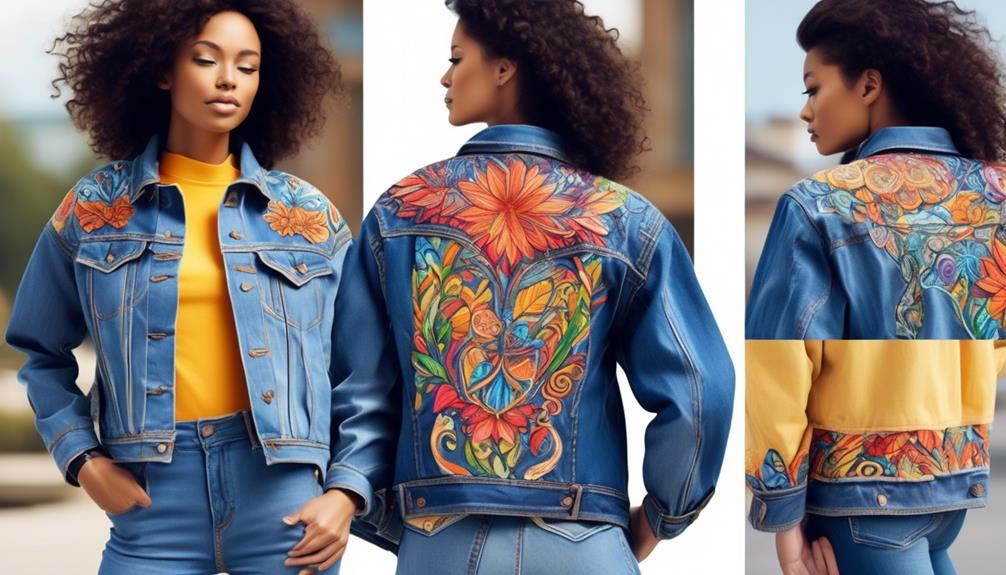
We can unleash our creativity and add intricate details to denim by using fabric markers. Fabric markers are perfect for creating custom designs on denim, offering a wide range of vibrant colors and the ability to achieve intricate patterns with ease. These markers provide an excellent alternative to traditional paint, offering a mess-free and convenient way to personalize denim garments.
When using fabric markers, it's essential to look for options that provide a colorfast application to ensure that the designs remain vibrant and intact even after multiple washes. Opting for high-quality fabric markers can make a significant difference in the longevity of the designs, ensuring that they stay looking fresh and vibrant for a long time.
Whether you're creating intricate illustrations, personalized monograms, or eye-catching patterns, fabric markers offer a versatile and precise way to express your individual style on denim. With their fine tips and rich pigments, fabric markers empower you to transform ordinary denim pieces into unique, personalized works of art.
Puff Paint
After personalizing denim with vibrant designs using fabric markers, we can elevate our creativity by adding dimension and texture with the use of puff paint. Puff paint, also known as 3D paint, is a fantastic way to make your denim designs pop.
Here are some tips for using puff paint effectively:
- Techniques: Experiment with different techniques such as stippling, outlining, and creating raised dots to add depth and texture to your designs.
- Best Puff Paint Colors: Opt for vibrant and bold colors to make your designs stand out. Colors like neon pink, electric blue, and lime green are currently trending and can bring a modern touch to your denim creations.
- Layering: Consider layering puff paint over fabric markers to create a multi-dimensional effect that will make your designs truly unique.
- Drying Time: Be patient and allow sufficient drying time for the puff paint to fully expand and set before wearing or washing your customized denim pieces.
Frequently Asked Questions
Can I Use Regular Acrylic Paint on Denim?
Yes, you can use regular acrylic paint on denim. However, there are acrylic paint alternatives specifically formulated for fabric that provide better adhesion and flexibility.
When painting denim, it's important to prep the fabric and use techniques like layering and blending to achieve the desired look.
Additionally, consider using fabric mediums to enhance the paint's performance on denim, allowing for a more durable and washable finish.
How Can I Prevent Fabric Paint From Cracking or Peeling on Denim?
How can we prevent fabric paint from cracking or peeling on denim?
To ensure durability, it's crucial to prep the denim by washing and thoroughly drying it. Then, apply the fabric paint in thin layers, allowing each one to dry completely before adding the next.
Heat setting the paint with an iron or dryer can also help prevent cracking and peeling.
Lastly, consider using fabric medium or heat transfer vinyl for added durability.
Is It Possible to Use Spray Paint on Denim Without It Fading or Washing Off?
Yes, spray paint can be used on denim.
However, it's important to choose a high-quality fabric spray paint to ensure longevity and vibrant color.
Look for fabric spray paints specifically designed for use on denim, and follow the instructions carefully for best results.
If you're aiming for intricate designs, consider using fabric markers in combination with spray paint to achieve the desired level of detail and color intensity.
Can Fabric Markers Be Used to Create Intricate Designs on Denim?
Yes, fabric markers can be used to create intricate designs on denim. These markers provide precision for detailed work like bleach designs or embroidery.
Additionally, they can be used with stencils to create patterns or for heat transfer designs.
When working with denim, it's essential to choose high-quality fabric markers that are fade-resistant and designed specifically for use on denim.
This ensures that your intricate designs will last through washes and wear.
What Is the Best Way to Apply Puff Paint to Denim Without It Becoming Stiff or Uncomfortable to Wear?
When applying puff paint to denim, we've found that gentle, even strokes work best for maintaining a soft feel. Utilizing puff paint techniques like stippling or dabbing can help prevent stiffness.
Consider mixing puff paint with fabric medium for a softer finish. Apply the paint sparingly and evenly to avoid discomfort.
It's all about finding the right balance between denim paint application and the comfort factor to create a wearable, stylish design.
Can the Paint Used on Denim Also Be Used for Insulating Rafters in a Garage?
Yes, the paint used on denim cannot be used for insulating rafters in a garage. Insulating rafters garage require specific insulating paint that can provide the necessary thermal protection. Using denim paint would not be effective for this purpose.
Conclusion
After experimenting with different paints and markers on denim, we've found that acrylic paint and fabric paint are the best options for creating vibrant and long-lasting designs.
The rich colors and durable finish make them perfect for customizing denim jackets, jeans, and other clothing items.
Whether you're a DIY enthusiast or a professional artist, these paints will help you bring your denim creations to life with style and flair.
- About the Author
- Latest Posts
Introducing Ron, the home decor aficionado at ByRetreat, whose passion for creating beautiful and inviting spaces is at the heart of his work. With his deep knowledge of home decor and his innate sense of style, Ron brings a wealth of expertise and a keen eye for detail to the ByRetreat team.
Ron’s love for home decor goes beyond aesthetics; he understands that our surroundings play a significant role in our overall well-being and productivity. With this in mind, Ron is dedicated to transforming remote workspaces into havens of comfort, functionality, and beauty.
Beginners Guides
Tips for Painting a Couch
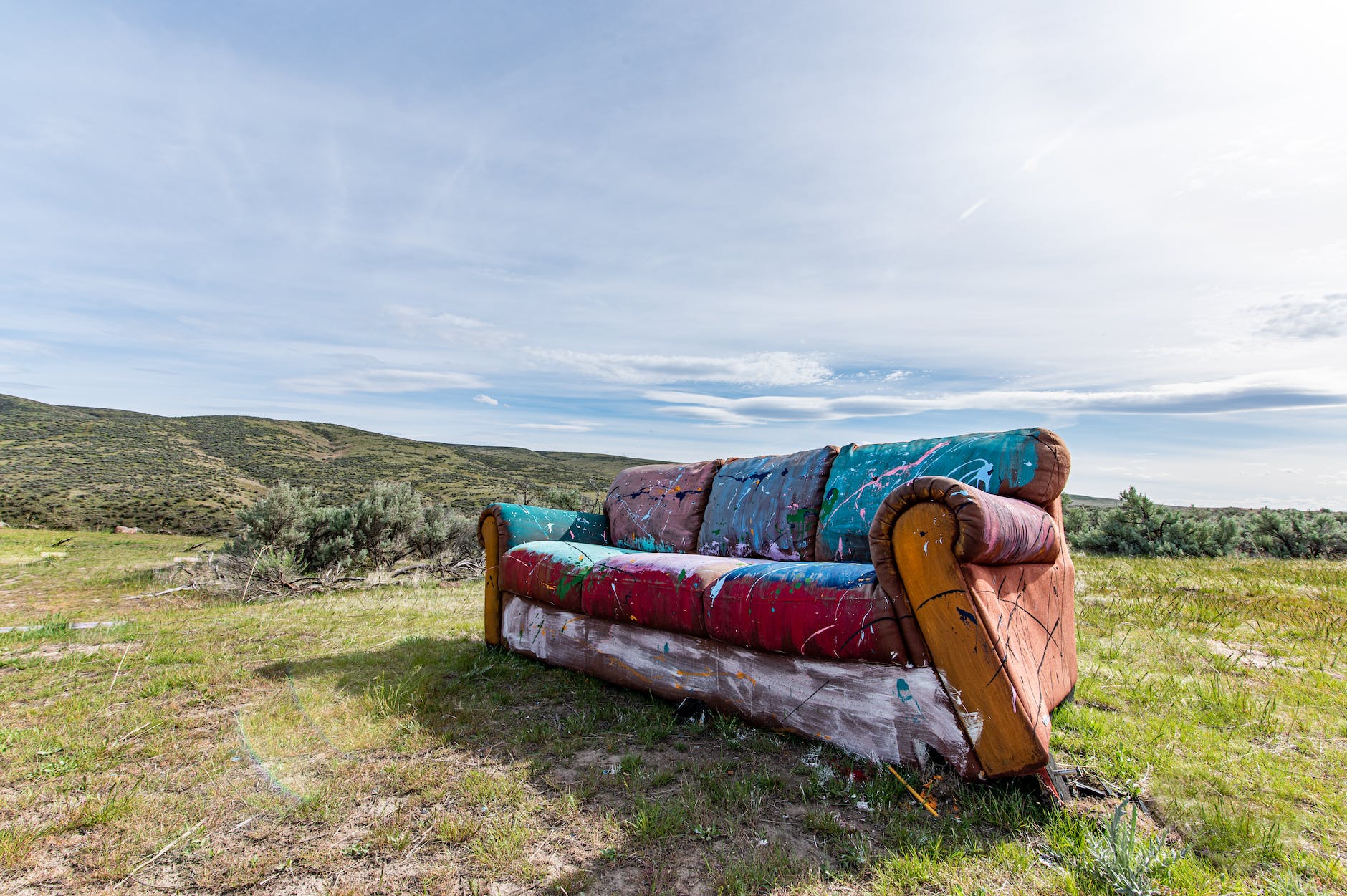
Here are some crucial pointers, whether you are painting a sofa or altering its color. It is essential to utilize only high-quality paint. Paint composed of low-quality materials will not yield the same results and will likely crack once dried. For upholstery, it is recommended to use fabric paint for optimal results. This will provide a seamless finish without making the sofa feel stiff.

Chalk paint on a couch
Before applying chalk paint on a couch, it is important to prepare the surface. To remove paint, use Goo Gone and wash the surface with warm water. Dry the piece completely. Lightly sand any areas that are rough with 220 grit paper. The entire couch doesn’t have to be sanded.
After you have prepared the surface you can paint the couch. A spray bottle or a brush are the best tools for applying the paint. This will allow the paint to penetrate fabric fibers. Even after multiple coats, it will last for years. To reach into buttons and crevices, you can use a paintbrush. Between coats, let the fabric dry completely. To protect your couch, apply a clear wax.
Oil-based paint
If you are looking for a long-lasting finish, oil-based paint is the best choice. It adheres to most surfaces and leaves a rich, lacquer-like appearance. This is the best option for high-traffic areas like a couch. You can also get this type of paint in flat, satin, or glossy finishes.
Before you start painting, be sure to understand the differences between oil and water-based paints. Water-based paint won’t stick well to oil-based paintings. Use rubbing alcohol to test the paint’s adhesion. Dip a white cloth in rubbing alcohol, and rub the wall with it. Water-based paints will transfer to a clean cloth easily, while oil-based paints will not.
Use fabric paint
If you want to paint your couch using fabric paint, you will need some basic tools. To paint the upholstery with fabric paint, you will need a nylon paintbrush, a drop cloth and a paint container. To add durability and prevent the paint from peeling, you may use sealing wax. To ensure that the paint spreads evenly, you may want to dampen your fabric with plain water.
After you’ve painted your couch, allow it to dry completely before applying the second layer. You should wait no more than an hour between each coat to ensure the paint does not dry too quickly.
Sanding
These are some helpful tips for painting a couch. Preparing furniture for painting is as simple as sanding. This is essential as you will want to inspect the final product before you start. It is important that you see the finished piece before you start painting.
Sanding furniture is crucial to ensure paint adheres properly. This will ensure that your new coat of paint will adhere to the furniture with a smooth and even finish. The furniture can be sanded with either an orbital or hand sander, depending on its condition. You will need 150-grit Sandpaper for this step. You can also use sanding blocks to reach hard-to-reach places.
Use a tack cloth
You can make your own tackcloth if you don’t have enough money to purchase a professional painter’s cloth. The basic cloth should measure approximately twelve by twenty-four inches. It doesn’t matter what size you choose. Just soak it in water, then dry it. Fold it in multiple layers.
It is not difficult to choose a tackcloth, but it is essential to do your research. It is crucial to make sure that the tackcloth doesn’t leave wax residue after drying, and doesn’t bleed paint. Tack cloths are suitable for small projects but professionals might prefer them for larger surfaces.
Use milk paint to cover a couch
Milk paint is a great way to give your couch a distressed appearance. Milk paint, which is thinner than regular paint, leaves the wood grains visible. This allows you to layer and distress. This can be applied to a sofa or couch with ease.
The first coat may appear streaky. Apply another coat to even out the color. Remember that milk paint can be porous so it must be sealed. It’s easy and shouldn’t take too much time.
Oil-based paint for leather couches
Oil-based paints can stain leather couches. There are methods to clean it. First, you need to dissolve the oil in the paint with a special solvent. This should remove most of the stain. Hydrogen peroxide can also be used to remove stubborn stains.
It is harder to remove oil-based paint than water-based. It is important to remove all paint from your couch. It’s not difficult if you act quickly. Once the paint dries, it will be more difficult to remove. Most paint stains can be removed with olive oil and soap. If you have a stubborn stain you can use an edged tool.
- About the Author
- Latest Posts
Introducing Ron, the home decor aficionado at ByRetreat, whose passion for creating beautiful and inviting spaces is at the heart of his work. With his deep knowledge of home decor and his innate sense of style, Ron brings a wealth of expertise and a keen eye for detail to the ByRetreat team.
Ron’s love for home decor goes beyond aesthetics; he understands that our surroundings play a significant role in our overall well-being and productivity. With this in mind, Ron is dedicated to transforming remote workspaces into havens of comfort, functionality, and beauty.
Beginners Guides
Craft Paint Storage
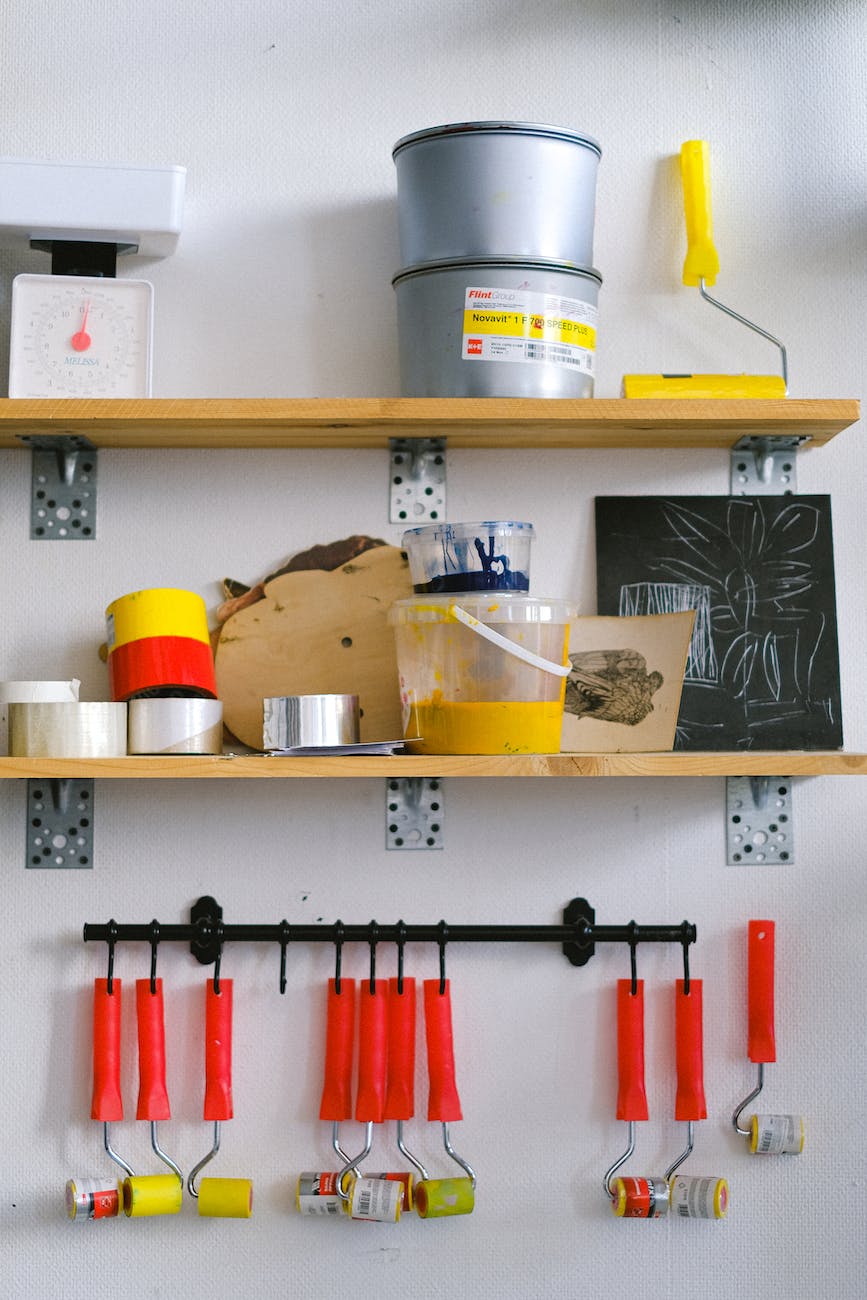
You should maintain the quality of your craft paints by storing them in a designated paint storage unit. A rotating organizer like the Craft Smart Paint Storage Spinner is an ideal choice. These units assist in organizing your paints for easy access and help in keeping them dry, which is crucial for preserving their quality.
Plydolex Army Painter
The Plydolex Army Painting Rack is a great storage solution and can store a variety of art supplies. It can store up to 74 paint bottles and 14 paint brushes. The organizer’s solid wood construction makes it durable and will last for many years. The Plydolex army painting wooden paint storage rack is a better option if you need a permanent solution to your paint and art supplies.
The right size Plydolex army paint rack is crucial. There are many sizes available so that you don’t run out paint storage space. The large holes make it easy to store larger bottles of paint, while the smaller holes can hold smaller ones.
The corner Plydolex storage rack for paint has 18 large holes to hold larger paint bottles. You can also use the fourteen smaller holes to store dropper-style paint containers. The rack’s design makes it easy to find paints and keeps them organized.
Citadel army painter
Dropper bottles are a great option for those looking to store their Citadel army colors. Dropper bottles work better than pots, and they will keep your paints from leaking, especially if your cat likes to mess up whenever he can. This paint storage solution has another advantage: It is compact. The 5mm thick PVC is light, waterproof, anti-corrosion and water-resistant. Although it is an excellent storage solution, it may not be compatible with all paints.
The Citadel paint set includes 48 pots of paint in three ranges: Shade, Layer, and Base. A sturdy plastic box holds two racks of twenty-one paints each. The lid has a handy tray that makes it easy for you to pick up and place the paints after use.
Citadel provides a paint storage system that is suitable for army painters. Modular design of the paint station allows you to store 30 different paints. The kit also comes with 7 paint brushes and a water bottle. The package also contains a painting guide. It is important to note that Citadel paint storage units may not be the only option on the market.
Citadel army paints are available in many gaming shops around the world. However, messy paints can result from pouring the paint into the pot. The paints will dry quicker if this is done. This is not recommended to paint large buildings or vehicles. This can cause more mess and dry paints faster.
- About the Author
- Latest Posts
Introducing Charles, the Editor in Chief at ByRetreat, whose passion for interior design and editorial excellence elevates every remote workspace to new heights. With his keen eye for detail, impeccable taste, and expertise in design, Charles brings a wealth of knowledge and creativity to the ByRetreat team.
As the Editor in Chief of a renowned lifestyle blog, Charles has honed his skills in curating captivating content and staying up-to-date with the latest trends in interior design. His deep understanding of aesthetics and the power of storytelling through design enables him to create remote workspaces that are not only visually stunning but also rich in personality and meaning.
Beginners Guides
How to Distress Your Kitchen Cabinets With Chalk Paint
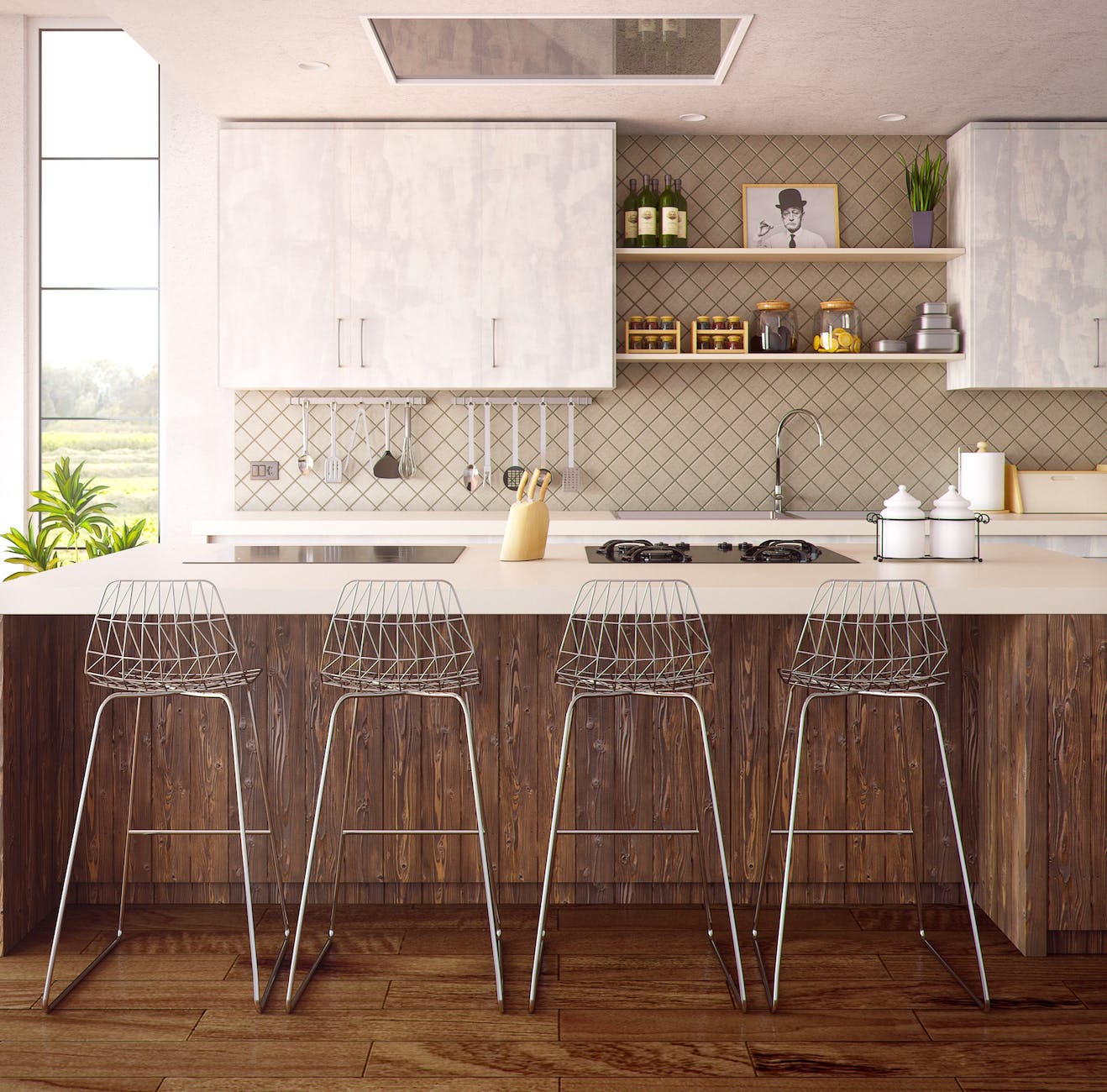
Chalk paint is the top option for achieving a distressed look on your kitchen cabinets. This environmentally-friendly, low VOC paint is simple to clean and can be applied with a sprayer or brush in a variety of colors.
You can distress your kitchen cabinets with chalk paint

You can distress your kitchen cabinets with Chalk Paint. This is a great method to update your kitchen decor. Chalk paint is a special type of flat paint that sticks to almost all surfaces. After the painting is complete, you’ll need to apply a protective coat. Varathane Water-based Top Coat Matte is an option to achieve a matte look.
Preparing your cabinets for painting is important. Wash them with soap and water before you start. If you find any areas that are not showing through, spot-priming might be required. You will need to paint two to three coats. To achieve distressed effects, you can layer more than one colour.
You can distress your kitchen cabinets using chalk paint to give them a matte finish. However, you should seal them with a protective wax. It will protect them from staining or scratching. This protects paint but needs to be maintained. Wax is not heat resistant so you may need to reapply it occasionally.
Preparation
Before you paint your kitchen cabinets with chalk paint, it is important to prepare them. The paint will dry completely in approximately two weeks. Before applying the second coat, it is important that the first coat has dried completely. You can seal the paint with a lacquer, or clear wax if you prefer a traditional mellow finish.
Clean the surface before you begin chalk paint kitchen cabinets preparation. Although you can apply the paint to almost any surface, it’s best to have a smooth one. Sand the cabinet surface before you apply the paint. Fill in any gaps. Prime any areas not covered by paint. Apply two coats or more of paint to cover the entire area. To prevent chipping, you can add a wax topcoat after the paint dries.
You may need to fill in any gouges or scratches that are deep and rough if the surface is bare. You can cover small imperfections because chalk paint is thicker and more durable than regular paint. The paint will leave a rough finish.
Dry time
It is important to understand the drying time of chalk paint before you begin to paint your kitchen cabinets. It’s likely that the first coat will be streaky, so use it as a primer before you apply the second coat.
Chalk paint can be used on kitchen cabinets easily. It is easy to transform your kitchen’s appearance without spending too much. You can select from multiple colors and apply multiple layers. To achieve a distressed look, you can also use milk paint.
You must clean your cabinets thoroughly before applying chalk paint. You can’t let the paint show through if you don’t clean your cabinets well. You can use a degreasing product to clean the cabinets. You can wipe the cabinets clean using shop cloths. Repeat this process several times.
Sealing
To ensure that chalk paint kitchen cabinets lasts a long time, it is important to seal them. You can paint your cabinets to create an elegant farmhouse appearance or practical reasons. You should sand any damaged or patched areas before applying the sealer.
To seal your cabinets, you can use wax or polycrylic. Although wax is not as durable as acrylic, it will not yellow over time. If you decide to stick with wax, you will need to apply it again every few months. If you live in an area with high traffic, polycrylic is the best choice.
To preserve the new look, seal them with clear wax or lacquer after the chalk paint has been applied. Waxes provide a warm and tactile finish. Water-based polycryics, however, are more flexible. Before applying the second coat, let the polycryics dry completely.
- About the Author
- Latest Posts
Introducing Ron, the home decor aficionado at ByRetreat, whose passion for creating beautiful and inviting spaces is at the heart of his work. With his deep knowledge of home decor and his innate sense of style, Ron brings a wealth of expertise and a keen eye for detail to the ByRetreat team.
Ron’s love for home decor goes beyond aesthetics; he understands that our surroundings play a significant role in our overall well-being and productivity. With this in mind, Ron is dedicated to transforming remote workspaces into havens of comfort, functionality, and beauty.
-
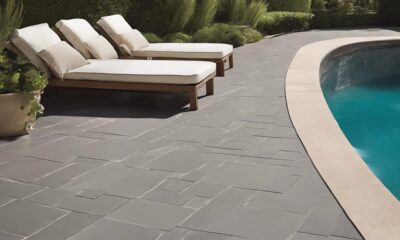
 Vetted4 hours ago
Vetted4 hours ago15 Best Tile Adhesives for Outdoor Use – Top Picks for Durable and Weather-Resistant Installations
-
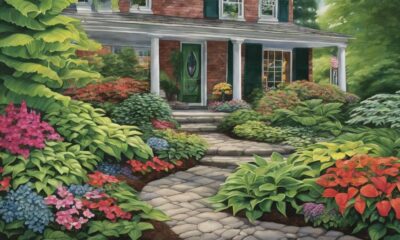
 Vetted1 day ago
Vetted1 day ago15 Best Plants to Thrive on the North Side of Your House – A Gardener's Guide
-

 Vetted1 week ago
Vetted1 week ago15 Best Boxwood Varieties for Thriving in Full Sunlight
-

 Vetted2 weeks ago
Vetted2 weeks ago15 Best Ways to Label Clothes for Nursing Home Residents – Stay Organized and Efficient
-

 Decor3 days ago
Decor3 days agoAre Home Decor Stores Profitable?
-

 Vetted1 week ago
Vetted1 week ago15 Best Dryer Vent Hoses to Keep Your Laundry Room Safe and Efficient
-

 Vetted1 week ago
Vetted1 week ago14 Best Cleaners for Aluminum Surfaces – Shine Bright Like a Diamond
-

 Vetted1 week ago
Vetted1 week ago15 Best Spider Sprays to Keep Your Home Arachnid-Free










